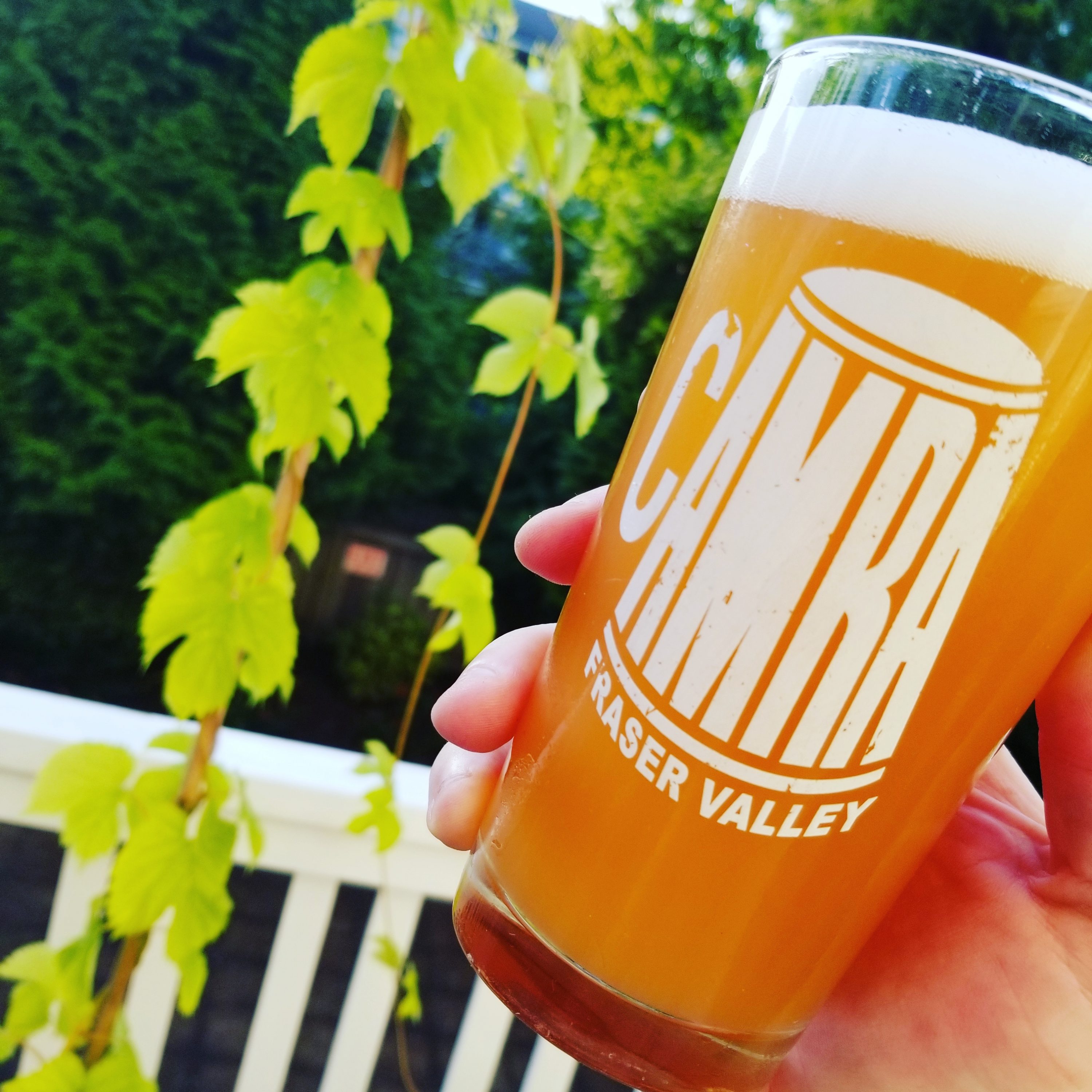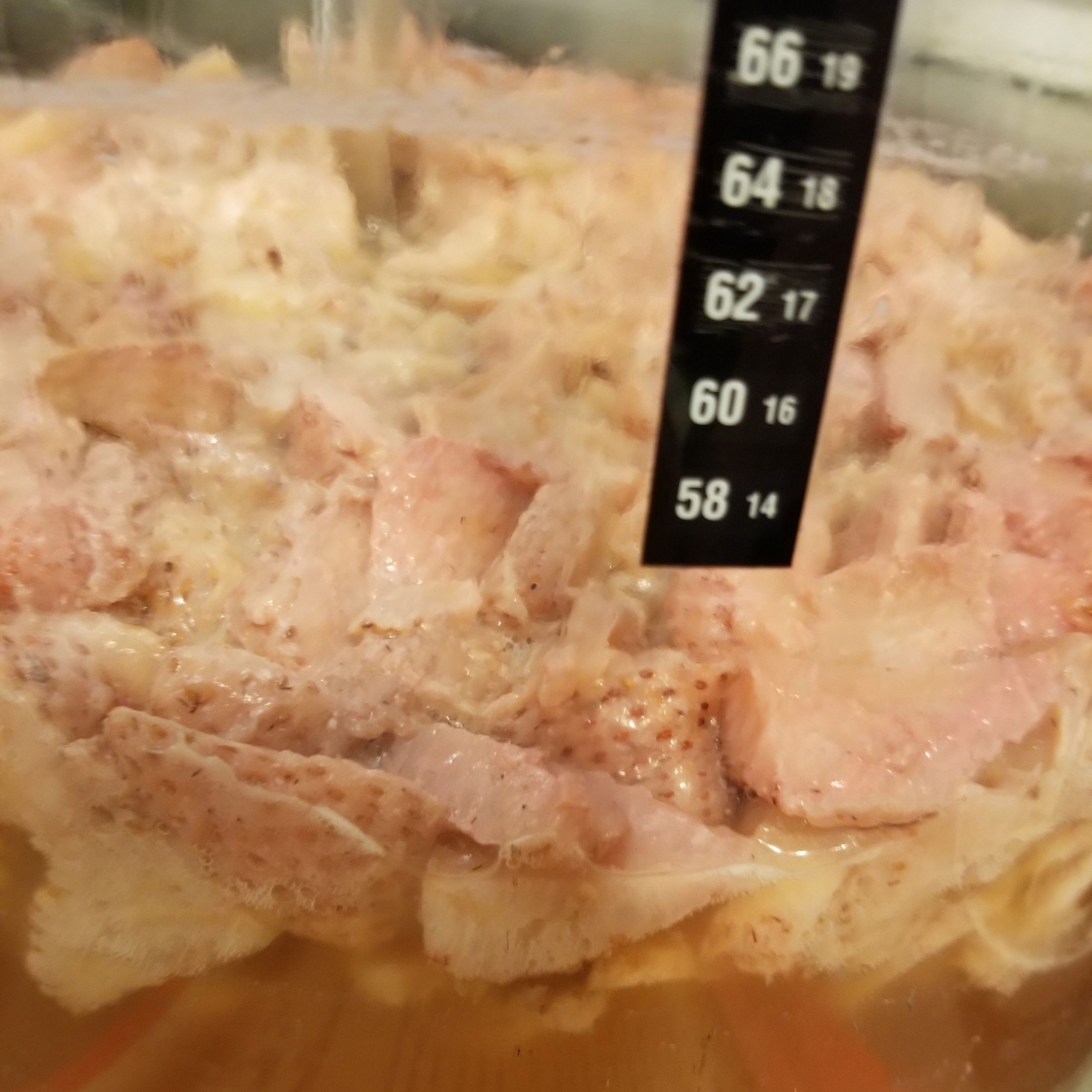
Nothing beats the summer heat like a light refreshing fruit beer on a sunny patio. Strawberries grow well in the Fraser Valley and there are many local farms that offer u-pick berries. Strawberries are a little more challenging to brew with than other fruits such as raspberries, but strawberries impart a wonderful aroma without much colour nor body.
All Grain Recipe
Batch Size: 19 liters
Boil Size: 24.7 liters
Boil Time: 90 min
End of Boil Vol: 22.7 liters
Equipment: Pot and Cooler ( 5 Gal/19 L) – All Grain
Efficiency: 60.00 %
Ingredients
| Amt | Name | Type | # | %/IBU |
|---|---|---|---|---|
| 2.5 kg | Pilsner (2 Row) Ger (2.0 SRM) | Grain | 1 | 50.0 % |
| 2.5 kg | Wheat Malt, Ger (2.0 SRM) | Grain | 2 | 50.0 % |
| 21 g | Hallertau [4.30 %] – Boil 60.0 min | Hop | 3 | 11.4 IBUs |
| 1 pack | Hefeweizen Yeast | Yeast | 4 | |
| 1.5 KG | Strawberries | Fruit | 5 |
Gravity, Alcohol Content and Colour
Original Gravity: 1.046 SG
Final Gravity: 1.004 SG
Bitterness: 11.4 IBUs
Est Color: 3.7 SRM
Actual Alcohol by Vol: 5.1 %
Mash Profile
The high wheat content will increase the likelihood of a “stuck mash”. A stuck mash is a thick dough-like mash that will not let wort flow past the mash tun’s false bottom. Add a few handfuls of rice hulls when mashing in to prevent a stuck mash. You can unstuck a mash by blowing into the mash tun through the outlet.
I personally like most beers to on the dry side and I especially like hefeweizens on the dry side. Furthermore, I think that dry beers allow fruit beers to showcase the fruit better. I recommend targeting a mash rest temperature of 64.5 c to 65.5 c to create a dry well-attenuated finish beer.
Single Infusion: Medium Body with batch Sparge
Sparge Water: 15 liters
Sparge Temperature: 76c
Total Grain Weight: 5.569 kg
Grain Temperature: 22c
Tun Temperature: 22c
Target Mash PH: 5.20
Water | Step Temp | Step Time | |
|---|---|---|---|
| Mash In | 15 liters at 73c | 64.5c | 60 min |
| Sparge 1 | 5.5 liters at 76c | – | Drain till empty |
| Sparge 2 | 5.5 liters at 76c | – | Drain till empty |
| Sparge 3 | 5.5 liters at 76c | – | Drain till 1.01 sg |
Boil
After you have collected all your wort bring it to a boil in a single pot. This recipe calls for a 90 min boil because of the pilsner malt. There are high levels of S-methylmethionine (SMM) in pilsner malts. SMM is a precursor to dimethyl sulfide (DMS), which can leave a cooked corn off-flavor in your beer. Fortunately, SMM is volatile and will be boiled off over 90 mins with the lid off.
Add 21 grams of Hallertau hops 30 mins into your 90 min boil (60 min mark). After the boil is finished, chill the wort rapidly with a wort chiller and collect the wort into a fermentor.
Fermentation
Hefeweizen beers are well known for tasting like banana and clove. You can encourage more banana notes than clove by under pitching the yeast. I personally like hefeweizens with lots of banana, and it goes well with the strawberry that we will add later, so I recommend simply using one yeast package, but if you like more clove notes use two packages or make a yeast starter.
Typically a Hefeweizen (like American Wheat Ales) is fermented quickly and drank young and fresh. Normally, I would not use two-strange fermentation for a wheat ale, but given that we are adding strawberries I think the second fermentation in a carboy is required.
By fermenting the grain and fruit separately, you force the yeast to eat the more complex maltose sugars before the more simple fructose sugars. Kind of like forcing a kid to eat his dinner before dessert.

When fermentation is 80% to 100% complete (normally 5 to 7 days), fill a clean and sanitized carboy with your strawberries (frozen work best). Then siphon the beer on top of the strawberries. Fermentation should restart in the next 24 hours and slow to a stop over the next week. The strawberries will ferment out all their sugars and colour leaving ugly white berries.

I generally bottle or keg 2 to 3 weeks after adding fruit. Be careful as you siphon off the strawberries because they can clog up the siphon.
Tasting Notes
Strawberries have a tend to ferment out and leave little flavour, colour, or aroma. That is why you are going to need about 1.5 kgs, whereas you might only need 1 kg of raspberries to get a very strong raspberry taste. But with 1.5 kgs you will get a noticeable strawberry aroma, and a slight pink colouring. You will get a light sour note from acids in the fruit, but nothing like a kettle sour, or a lambic.
There are the banana flavours and aroma that you would expect from a hefeweizen, but don’t enter it into a brewing contest as a hefeweizen because it is not to style and offend any beer-loving German.

Nathan is a seasoned homebrewer and winemaker. He writes about agritourism at Liftylife.ca